1-1-23
Living with Bill Nighy: In the Way Station of His Mind
By Diane Sippl
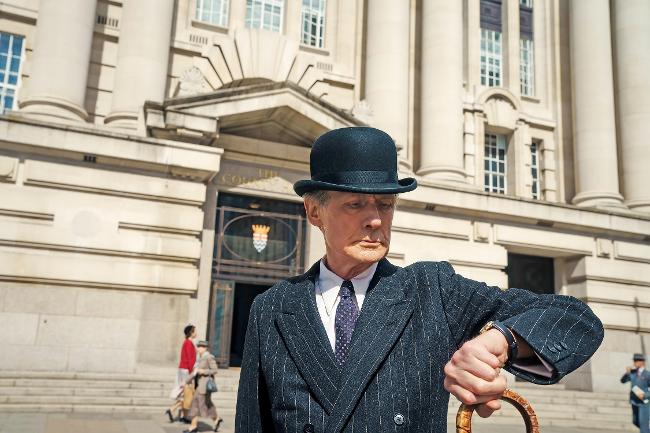
On a post-screening panel with South African director Oliver Hermanus and Japanese-British screenwriter Kazuo Ishiguro, British lead actor Bill Nighy remarked to the audience that the three of them were probably the only guests at the festival (the 2022 AFI FEST) to arrive in jackets and ties. It was fitting, given the elegance of their film, Living.
When asked (since he was in Hollywood, after all) if he had any tips for budding actors, Nighy replied, “I don’t really have any advice. I don’t watch my own work, and I don’t read about it, either.” He got a laugh. Then, almost shrugging his shoulders, as if modestly contributing to the event at the sold-out Sunday matinee, he added, “To be social, I could say to young actors, ‘Pay your taxes. And don’t do drugs…’” Another laugh, because many in the audience filled in the rest of a now-famous Nighy line of dialogue, “…Become a pop star and they give you them for free!” (The line comes from Nighy’s has-been rock celebrity, Billy Mack, in the wacky film, Love Actually, where he sings a kitschy Christmas song on TV in his birthday suit, his guitar hiding his private parts.) More apropos to his art and craft, and taking it seriously, he got back to the acting question: “Learn your lines… and show up.” He railed at would-be actors who think that they can arrive late to the set and not even know their lines. “I learn them inside-out and upside-down. When I do this, I can be more spontaneous during the filming.”
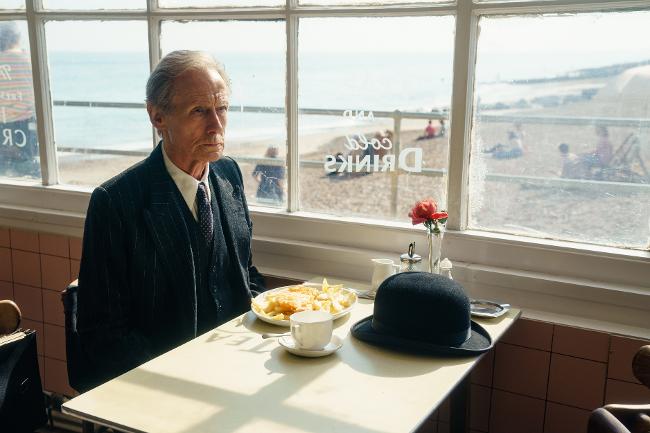
In Living he plays a career bureaucrat devoted to serving, day after day, year after year, as head of the county’s Public Works Department in the aftermath of World War II as England struggles to re-build itself for future generations. Director Oliver Hermanus and producer Stephen Woolley felt that while Britain and Japan may have fought on opposite sides in the war, both nations had also held imperial positions in the world and inherited rather stoic standards of behavior. Nobel laureate Kazuo Ishiguro, who grew up with Japanese parents in the UK in the 1950s, had experienced the two similar cultural psyches and the drives of each country to move forward. He wrote the screenplay of Living precisely for Bill Nighy, another child of 1950s England. Who better to project the social identity of reserve and propriety?
For his first screenwriting venture, the novelist Ishiguro accepted the task of scripting this remake of the legendary Akira Kurosawa’s 1952 film, Ikiru, meaning “To Live.” First off, then, it seems logical to make comparisons, and the similarities abound. Both films employ a combination of realism, expressionism, and impressionism. The conflict, the characters, the time period, even the motifs, stack up the same, from scene to scene, almost to the end. Many of the filmic techniques are shared: high-contrast lighting, flashbacks in the narrative, wipes in editing, slow-motion montage sequences, singing by the protagonist, and identical motifs. Still, the films differ noticeably from each other, especially in tone.
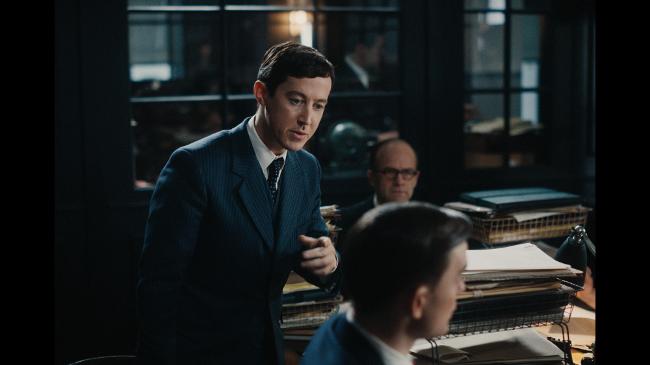
Ikiru is a lively, inventive, and dynamic critique of the Japanese social class hierarchy inscribed in the national order; Living is a simmering moral and inspirational tale cushioned by sentiment and romance and veering toward spirituality. Ikiru is often didactic, its voice-of-God off-screen narrator all but screeching over the soundtrack, telling us what to think. Living plays like a continuous melody (in fact there is hardly a moment without lovely off-screen music with an overuse of the solo piano, for example), telling us what to feel. Both protagonists face the prognosis of imminent death due to stomach cancer.
However, the beloved actor Kanji Watanabe, who performs the role of the petty county official in Japan, is loud, demonstrative, and bug-eyed. Thanks to the ingenious irony of the film, he faces his very real death with a noble deed and then leaves behind a living illusion of himself that others manufacture and uphold. The fallacy of his lasting identity allows for the success of the film’s censuring of post-war Japan. In London Bill Nighy, on the other hand, who generally utters his lines in a whisper and carries himself with restraint, is a handsome and genteel recluse to behold, even under the curse of vile gossip. His Mr. Williams is impeccably dressed and behaved; he guards his manners as a matter of good taste. Performing the same social deed as his Japanese counterpart does, after death he is mythologized in the film’s narrative, even if his subordinates are ultimately unable to follow in his path.
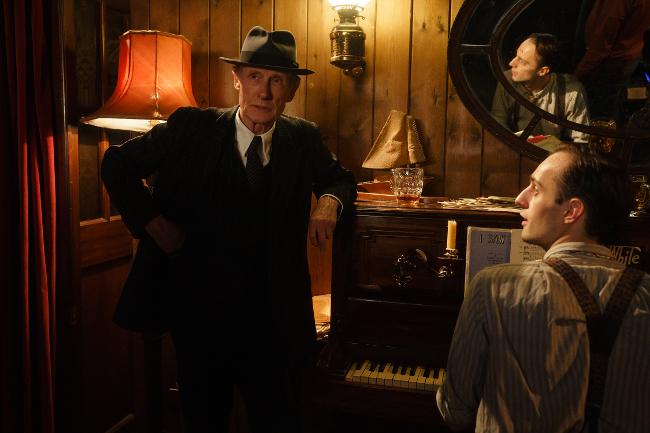
Mr. Williams is taciturn and reluctant to function because his position nearly requires it. “Keep the skyscrapers (of desk papers) piled high or else it’ll look like you have too little to do,” a subordinate, Miss Harris (Aimee Lou Wood), tells a new hire. Mr. Williams appears deeply dispassionate, reticent, even diffident—not for lack of trust in what others will think of him (he has too much integrity for that), but mostly uncertain of what he will think of himself. It cannot be overlooked that this man is a widower of some thirty years, by now so emotionally chiseled by his vapid work routine that he has sunk into himself, unsure of who he actually is.
His general conflict seems to be not so much the fear of death as the quandary of living. “I don’t know how,” Williams confesses to a dissolute writer he meets at the seaside (Tom Burke), a jolly enough fellow, as compassionate as he is glib, luckily, because he tries to comfort the “old chap” by showing him a night on the town in pubs, strip joints, and brothels. But all Williams manages to do is lose his hat—literally—and replace his bowler with a fedora. It’s the beginning of something new.
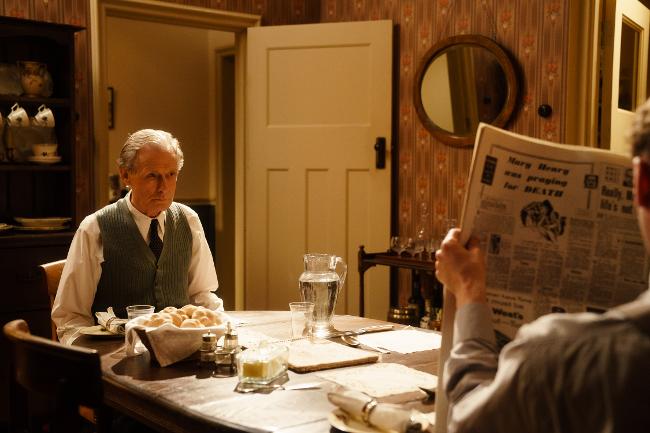
“Will it go down a storm?” he asks Miss Harris when he meets her on the street and she asks what they’ll think of it at the office. Their accidental run-in initiates a series of cordial outings after she has left his supervision at County Hall and accepted a position for managerial work. While their meetings are spontaneous and merely social, they are conspicuous enough to raise the ire of a few busybodies—enough for Williams’ son, Michael (Barney Fishwick), to be nagged by his wife (Patsy Ferran), whom he refers to as “the pastor,” to reprimand his father. In the perspective of all watchful eyes, Williams has failed to report to work, withdrawn his savings (earmarked for a new house by Christmas), and squandered money on a woman less than half his age. The family’s social reputation and economic standing are both at stake. (Don’t conventional mores and home ownership amount to the same for the rising middle class in postwar London?) But Michael is almost as impassive and inert as his father (they’ve both experienced the death of Williams’ wife, and neither has totally “come around” since then).
The militant prodding (overheard only once, that’s all it takes) of Michael’s wife for him to “do” something about his father’s “reckless” behavior nudges Williams into yet another tussle with himself before the mirror, a practice session, of sorts, for sharing his death knell with his son. As do the characters in the film, we feel we know Williams—but only, in any given moment, as well as he has come to know himself. The rehearsals of communication in the mirror are crucial here. That’s why what he does matters more than what he says (or has failed to say). We see him hem and haw, twitch and stutter, alter his stance, his posture, the direction of his head, all to express a polite way of putting it—that “it’s rather a bore.” Even after the grievous declaration from his doctor, all he could muster in response was, “Quite.” He can’t speak because he can’t reconcile himself with who he is, and once he discovers what he can do, he has no problem spouting out his needs, directing his team, issuing orders, and insisting on, even outspokenly begging for, what he wants. Self-knowledge allows his expression and action.
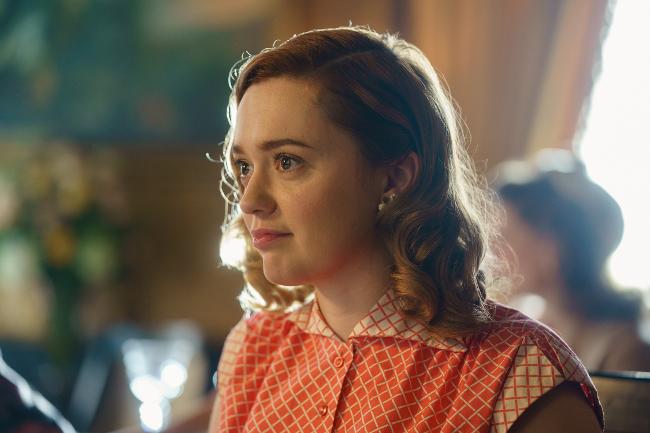
It is Miss Harris who gives light to Williams’ life. Yet even after a glorious day of escapades with her—a luxurious lunch at Fortnum’s (at which she shares her office nickname for him, “Mr. Zombie”) and a walk in the park—he can’t rise to confide in her his predicament. It takes another occasion, on his “pictures day” at a Cary Grant movie with her (I Was a Male War Bride, a film of deceptions and mistaken identities), then a visit to the arcades for games, and finally a quiet drink in a cocktail lounge for him to open up, not romantically so much as in admiration: “...that day I saw you in Picadilly, I thought, ‘Look at her—look at Miss Harris. If only to be alive like that for one day!’ I suppose I hoped you’d show me or teach me to be like you.” He is able to look straight into her eyes as he did a moment earlier, while explaining his cancer and prognosis, and he laughs and snorts heartily at her nickname for him, Mr. Zombie. “I wasn’t always, you know…”
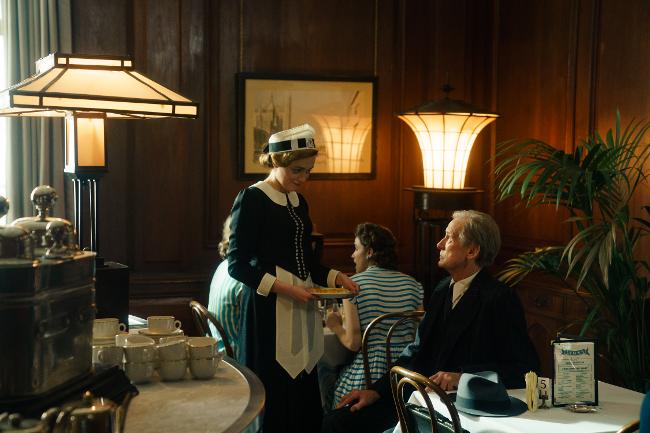
Now at about two-thirds of the way into the film, Williams’ life trajectory has reached a three-pronged turning point: first he undergoes a conversion experience, then he acts upon it, and then he dies—all of this in short order. The changes that transpire are so dramatic that it’s natural to ask what caused them. It’s certainly not a sudden health attack on park bench, but more like the opposite, a sudden jolt of joy at accomplishment. In Kurosawa’s Ikiru the dying man’s lady friend, a factory worker on an assembly line producing stuffed animals, literally tells him, “You could make something.” No one utters this advice in Living—far from it. The conflict is, and remains, the clash between Williams’ own reactions to his dying self (to the cancer of his non-functional “work” that has been eating away at him since his wife died) and the reactions of others to that same “working” man, who has been a cog in the wheel of social disservice.
Put another way, Williams shifts gears, from a reactive to a proactive way of life, short as it is. Though the screen time for showing this transformation is just a few minutes—a sweep through the office to collect paperwork, demand approvals, and gather the man-power for plowing through the rain to a construction site—it’s enough to leave us in awe before his coffin takes center stage in a local church.
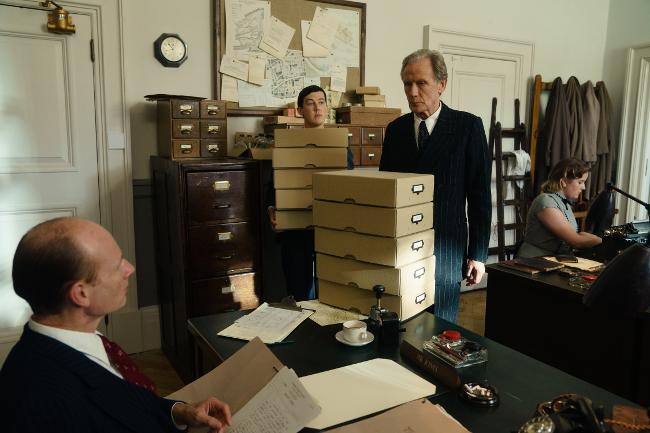
Sir James (Michael Cochran), the head of County Hall, and potentially Mr. Middleton (Adrian Rawlins), who is assigned to replace Williams after his death, react by stealing credit for building a children’s playground to replace a sewage site. The other cronies at work, Rusbridger (Hubert Burton) and Hart (Oliver Chris), stumble upon the truth of Williams’ passion and diligence in pushing the job through, beginning to end, but let the grand lesson trickle off under Middleton’s new management. There are only two (beyond the ladies campaigning for the playground and a compassionate police officer who all but witnessed Williams’ death) who learn from the legacy—Miss Harris and Mr. Wakeling (Alex Sharp). Not only that, screenwriter Ishiguro and director Hermanus make sure that these two they carry on with it. Living balances the lack of change among postwar bureaucrats with the promise of change in the new generation.
To this end, the dialogue adds something (“This time of morning… not too much fun and laughter—rather like church” as the Public Works men indoctrinate the newly hired Wakeling, and “It’ll do no harm,” the stock phrase for shelving paperwork in the office); but all the resources of traditional cinematic language play a more profound role, if only as subtext, that sustains the subtly ingenious thespian prowess of Bill Nighy and his supporting cast. We can start by looking at motifs: mirrors, rabbits, and a swing. Recurring throughout the second half of the film, each set piece or prop anchors a system of meanings with symbolic acuity.
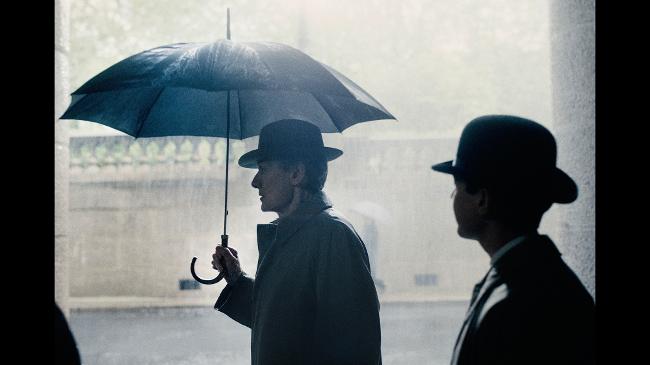
First, the mirrors and windows. It’s fascinating to note that once Williams reaches his turning point (in the restaurant as he “opens up” to Miss Harris about his brief future), it’s no longer he in the mirror directly behind him, but she. The camera angle has his back to the mirror in a small corner of it and foregrounds her reflection, the “double” of her face (and heart) as he reveals the news and she simultaneously inhabits two attitudes, old (embarrassed by their age gap) and new (deeply shocked and saddened by his fate).
Reflections and double images are ubiquitous in Living. In 2017 Kazuo Ishiguro was awarded the Nobel Prize for Literature with the observation that he “has uncovered the abyss beneath our illusory sense of connection with the world.” He was revered as taking on complex and enduring themes of “memory, time, and self-delusion.” In Living, as Williams pursues a braver alter-ego in front of his living room mirror, only for his reflection to be shattered into four splinters of his image, he’s framed by a staircase leading up to his son’s room. That he’s at the bottom of the stairs recalls earlier images of the steps up to the various floors of County Hall, that great fortress of empty administration, where the vertical camera angles look down on the hierarchy of those climbing to their presumed destinies, while the slanted banisters, perpendicular railing supports, and their shadows add graphic tension. For much of the film the contrasting blackness and light in the composition of the frames creates a bleak emotional undercurrent, and certainly an ominous tone of ambiguous identities.
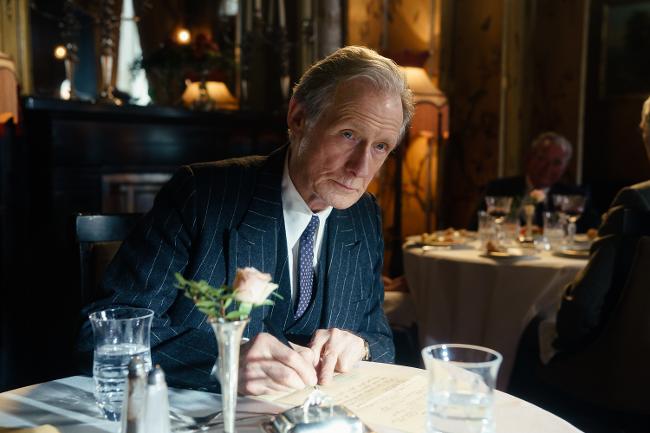
Take, for example, the post-mortem train sequence: inside the cabin it’s no longer Williams lingering in the dark (as in much of the film) but his four cronies, who are for the most part clueless as to the extent and meaning of their supervisor’s feat. As they begin to piece it all together, their dark suits that blend in with the dark upholstering gradually show off the brilliant colors of the train seats—swirls of peacock blue and kiwi green—and the view out their window dissolves from gray rain to brilliant fields as the exterior shot of the train emerges in a sunny landscape. This, after they “solve their puzzle” as to whether Williams knew his fate—after they have taken a vow to use Williams as their mentor and model for future efforts at Public Works.
The use of color is pronounced in sections of the film, for example the gemstone hues in the garments of the ladies who are emissaries for the playground—garnet, emerald, and sapphire tones—and the red and white or marigold dresses worn by Miss Harris, who is often framed on the street with a baby carriage passing by. She’s also the one who puts a smile on Williams’ face when she succeeds (after he has failed) to grasp a fluffy white bunny rabbit from a glass “cage” with a mechanical crane. She re-visits that game later with Mr. Wakeling. As with his very name, the rabbits seal the symbol of postwar re-birth, propagation, an eternal spring for the future.
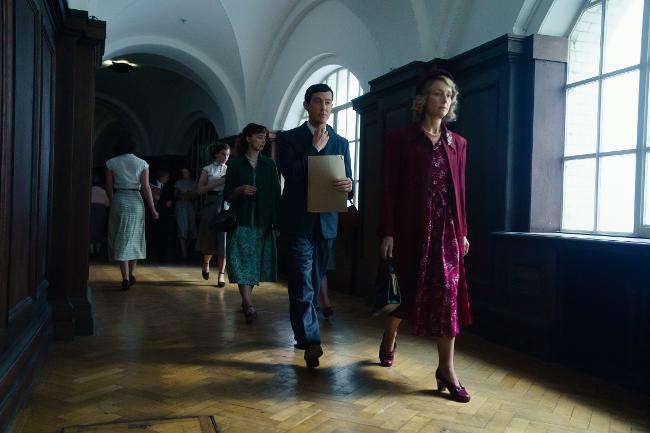
Color plays a role in the flashbacks as well, shifting from black and white before Williams dies, visually echoing his mournful state, to color after his death, vividly picturing the joys of the playground. But there is a final scene there, where the color takes over a very select image. In the black of night, in a gentle snowfall, he sings a song for the second time (after breaking down earlier with it in a pub scene)—the old Scottish ballad, “The Rowan Tree,” its lyrics obliquely but aptly radiating the feeling of the film. Not just the fact that Williams sings it, but also the fact that he croons it on a swing, back and forth, to and fro, acapella at that, at the very playground he got built, shows us his transition from life to death, but in a “living” mode. Outside his softly lit face, the only major light is a golden globe at the top center of the frame. Is it a streetlight? A full moon? Or perhaps a source even more abstract, as he would say: “My maker calling me.” The screen fades to black as Mr. Williams enters another space, one no longer of darkness, of shadows on the screen, but of light, and of “living.”
Living
Producers: Stephen Woolley, Elizabeth Karlsen; Director: Oliver Hermanus; Screenplay: Kazuo Ishiguro; Cinematography: Jamie D. Ramsay, SASC; Editing: Chris Wyatt; Music: Emelie Levienaise Farrouch; Production Design: Helen Scott; Costumes: Sandy Powell.
Cast: Bill Nighy, Aimee Lou Wood, Alex Sharp, Tom Burke, Adrian Rawlins, Hubert Burton, Oliver Chris, Barney Fishwick, Patsy Ferran, Zoe Boyle, Lia Williams, Jessica Flood, Michael Cochrane.
102 min., Color and B/W. In English.